2013 年 9 月公共英语三级考试真题及答案
SECTION I Listening Comprehension
Directions:
This section is designed to test your ability to understand spoken English. You
will hear a selection of recorded materials and you must answer the questions that
accompany them. There are two parts in this section, Part A and Part B.
Remember, while you are doing the test, you should first put down your answers in
your test book-let. At the end of the listening comprehension section, you will
have 3 minutes to transfer your answers from your test booklet to ANSWER SHEET 1.
If you have any questions, you may raise your hand now as you will not be allowed
to speak once the test has started.
Now look at Part A in your test booklet.
Part A
Directions:
You will hear 10 short dialogues. For each dialogue, there is one question and four
possible an-swers. Choose the correct answer- A, B, C or D, and mark it in your
test booklet. You will have 15 seconds to answer the question and you will hear
each dialogue only once.
What will the woman do tomorrow?
A.Hold a party.
B.See Mr. Smith.
C.Work overtime.
D.Attend a wedding.
2、 Who is Mr. Johnson according to the speakers?
A.Their former colleague.
B.Their former neighbor.
C.Their former teacher.
D.Their former client.
3、 What are the speakers talking about?
A.A job interview.
B.A reporter' s work.
C.How to impress people.
D.How to handle an interview.
4、 How many flights to Sydney will there be next Tuesday afternoon?
A.One.
B.Two.
C.Four.
D.Five.
�
5、 What did the man' s teacher tell him to do?
A.Polish his essay.
B.Hand in his essay.
C.Rewrite his essay.
D.Write a shorter essay.
6、 What can we learn about the woman' s son?
A.He often talks with his mother.
B.He often drives in a careless way.
C.He is willing to listen to his mother.
D.He is worried about his driving skills.
7、 What do we know about Jack?
A.He is a company manager.
B.He makes emergency calls.
C.He records emergency calls.
D.He is a company technician.
8、 What can we learn from this conversation?
A.The woman is paying the bill.
B.Bill' s phone number is 510-1520-20.
C.The man pays 20 dollars to the woman.
D.The woman has a 20-dollar bill changed.
9、 What does the woman mean?
A.The dentist' s is at a convenient place.
B.The dentist's is close to Times Square.
C.It was comfortable to sit at the dentist' s.
D.It was not so terrible a visit to the dentist' s.
10、 What do we know about the woman?
A.She is going to deliver a lecture.
B.She spent a year in the rain forest.
C.She is looking forward to the lecture.
D.She will finish her report this weekend.
Part B
11、What do we know about the woman's family?
A.They kept a lot of birds.
B.They lived in a big house.
C.They owned a small farm.
D.They suffered from poverty.
12、 What did the woman' s mother impress her with?
A.Her love.
�
B.Her success.
C.Her ambition.
D.Her knowledge.
13、 What did the woman' s mother wish her to do?
A.Go to college.
B.Become a writer.
C.Have a better life.
D.Support her family.
14、 Whom is the man probably complaining to?
A.A receptionist.
B.A travel agent.
C.A coach driver,
D.A hotel staff member.
15、 Why did the man wait in the heat for two hours?
A.The coach had to be replaced.
B.The coach driver felt sick.
C.The hotel rooms were full.
D.The hotel had to be cleaned.
16、 What did the man mention in his complaint?
A.Impolite hotel cleaners.
B.Dark light and dirty rooms.
C.Rude people living downstairs.
D.Disturbing noise and poor food.
17、 How did the man feel about the woman' s apology?
A.Amusing.
B.Annoying.
C.Desirable.
D.Reasonable.
18、 What did the NWHA survey aim to explore?
A.The incidences of obesity.
B.Popular views on obesity.
C.Ways to fight obesity.
D.The causes of obesity.
19、 How many people in the world are rated as being overweight?
A.16 million.
B.18 million.
C.1.6 billion.
�
D.1.8 billion.
20、 In which country do people feel the most pressure to be thin?
A.Brazil.
B.India.
C.France.
D.America.
21、 Who are most likely to blame their parents for obesity?
A.The French.
B.The Swiss.
C.Germans.
D.Russians.
22、 What do trendspotters do?
A.Take pictures of youth culture.
B.Write reports on youth culture.
C.Sell products to young people.
D.Create websites for young people.
23、 What does Look-Look concentrate on?
A.Recruiting trendspotters for its clients.
B.Providing advice to young trendspotters.
C.Organizing sales networks for its clients.
D.Dealing in information about youth trends.
24、 Why do some companies use Look-Look' s images on their websites?
A.To promote visits to Look-Look.com.
B.To attract young people to their new products.
C.To learn about what makes young people buy.
D.To encourage young people to be photographed.
25、 Why is it difficult for trendspotters to catch original styles?
A.Many young people like to show off.
B.Many young people stick to the rules.
C.Many young people try to copy trends.
D.Many young people refuse to take pictures.
SECTION II Use of English(15 minutes)
What do I want? It' s really a very 26 question; yet many of us are not sure.27
it
doesn' t have to be all that difficult to answer. It' s a matter of 28 Have
you ever looked through a telescope at something? You find a 29 point to concen-trate
on, and then 30 the settings. At first, it's too 31 , then it's too far away,
finally
it' s just right.The 32 is that it takes many adjustments to 33 the subject
�
into focus. If 34 want to look at something else, the 35 starts again.
Goal-setting is the same way. Don' t 36 if at first you don' t know exactly
what you want
anything. Sometimes the
to 37 . Just don' t make the mistake of never committing 38
answer is very simple: Just 39 something!
Dr. Mark Goldstone, author of Get Out of Your Own Way, 40 you "look back in
order to look 41. " Examine your calendar at day' s end during a typical week and
42 each
appointment or listing on a scale of - 3 to + 3, 43 -3 means "If I never do this
again, it will
be 'too soon to do it. " and + 3 means "I could do this all day
long, and I can' t 44 to do it all over again. " 45 you identify the frequent themes,
you' 11 be able to better focus your dreams.
26、
A.strange
B.simple
C.ridiculous
D.funny
27、
A.And
B.So
C.For
D.But
28、
A.time
B.determination
C.focus
D.preference
29、
A.reference
B.turning
C.starting
D.major
30、
A.switch
B.open
C.adjust
D.fix
31、
A.large
�
B.dark
C.foggy
D.close
32、
A.sign
B.point
C.choice
D.law
33、
A.bring
B.move
C.include
D.put
34、
A.observers
B.viewers
C.we
D.you
35、
A.practice
B.process
C.progress
D.performance
36、
A.hesitate
B.mind
C.worry
D.apologize
37、
A.see
B.say
C.do
D.hear
38、
A.in
B.on
C.to
�
D.at
39、
A.write
B.pick
C.test
D.draw
40、
A.suggests
B.announces
C.imagines
D.warns
41、
A.forward
B.up
C.round
D.in
42、
A.read
B.correct
C.define
D.grade
43、
A.which
B.what
C.where
D.why
44、
A.wait
B.promise
C.afford
D.manage
45、
A.Once
B.Unless
C.Before
D.Though
�
SECTION III Reading Comprehension Part A(40 minutes)
Text 1
In 1997, 25 Japanese citizens, all older than 60, launched Jeeba (the name means
"old man and old woman") to make senior-friendly products. They knew they were
making history when
elderly and for the elderly. " They do not hire young people, and the oldest of
their workers is 75.
they coined their company motto : "Of the elderly, by the
Firms run by senior citizens are still a rarity, in Japan and worldwide. But
the elderly have
numbers on their side. Healthier and longer-living seniors, born
immediately after World War II,are reaching retirement age in huge numbers all over
the developed world. Extremely low birthrates in those same countries mean there
are far fewer young workers to take their place. One likely con-sequence is now
clear: shrinking work forces.
While the streamlining effects of international competition are focusing
attention on the need to create and keep good jobs, those fears will eventually give
way to worries about the growing short-age of young workers. One unavoidable
solution: putting older people back to work, whether they like it or not. Indeed,
advanced economies like those of Finland and
Denmark have already raised their
retirement ages. Others are under severe pressure to follow suit, as both the
European Com-mission and the Organization for Economic Cooperation and
Development have recently warned their members that their future prosperity depends
on a growing contribution from the elderly.
Whether these changes are good or bad news to workers depends on whether they
anticipate retirement with eagerness or dread. In the United States, half of
working-age Americans now expect to work into their 70s, whether by financial
necessity or by lifestyle choice, according to a new study by Putnam Investments.
Contrary to still widespread assumptions, there is very little hard evidence
to suggest that com-panies cannot stay competitive with a rising share of older
workers. At 13ritish hardware chain B&Q, its "elder worker" stores in Manchester
and Exmouth were 18 percent more profitable than its regular outlets--due in part,
the company says, to six times less employee turnover and 60 per-cent less
shoplifting and breakage.
46、Jeeba' s difference from a conventional company mainly lies in
A.the age of its employees
B.the number of its owners
C.the quality of its products
D.the scope of its operations
47、 In the developed world, compared with young people, the elderly
A.are better at business
B.are greater in number
�
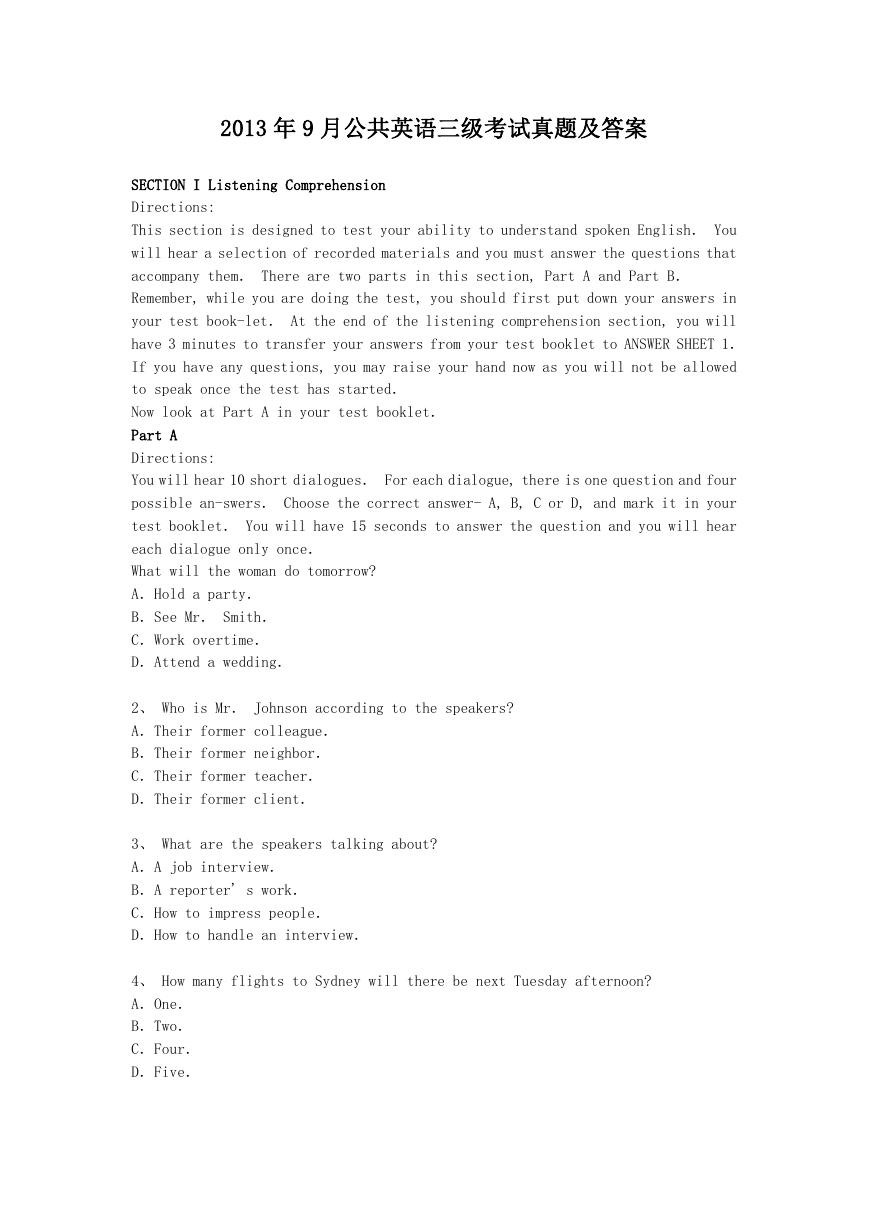
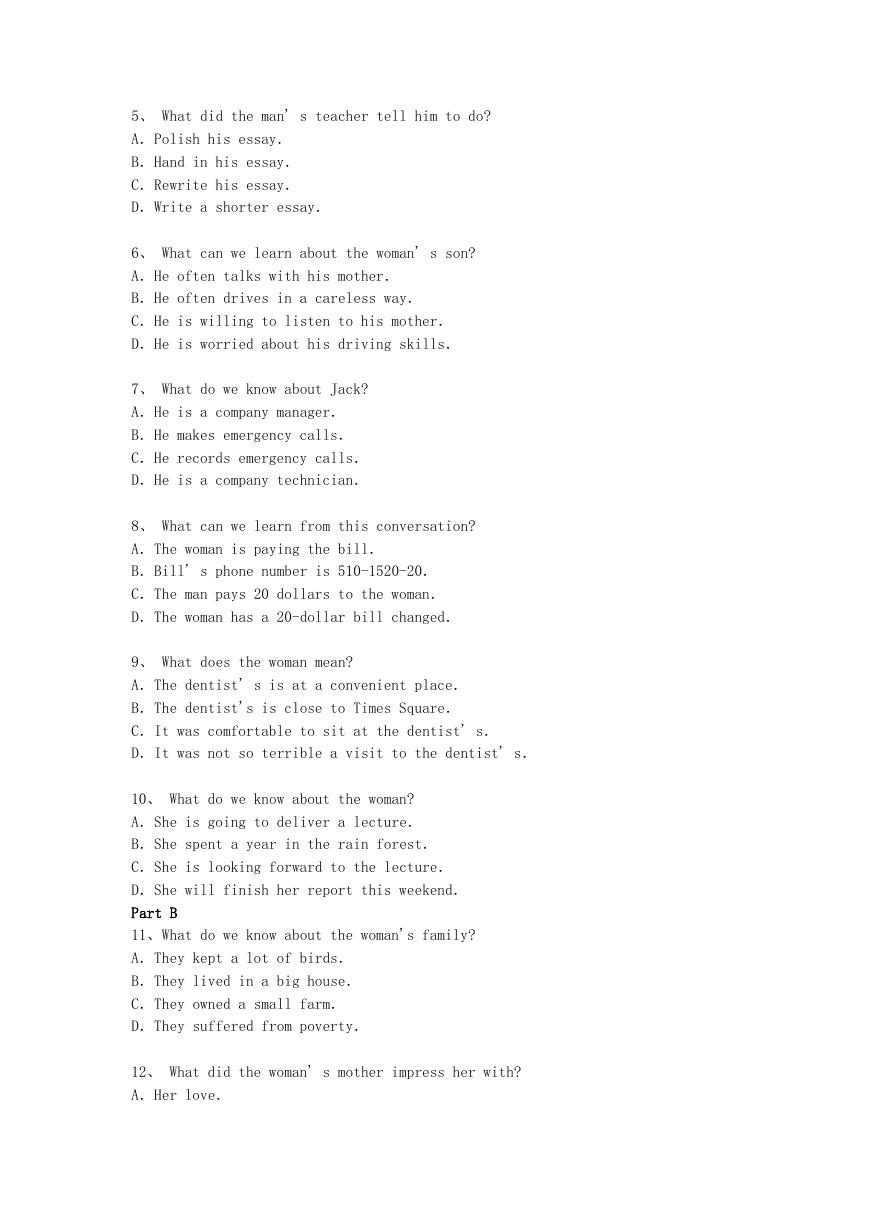
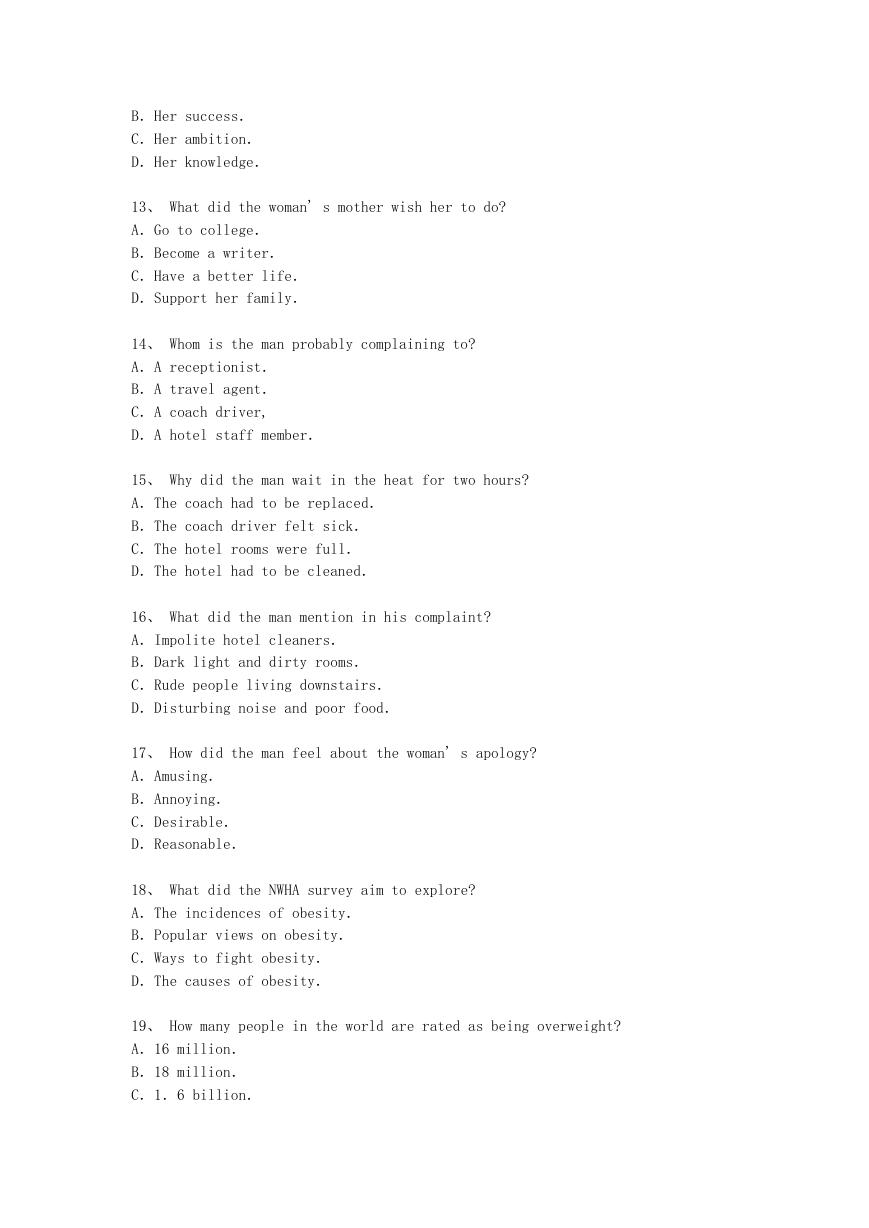
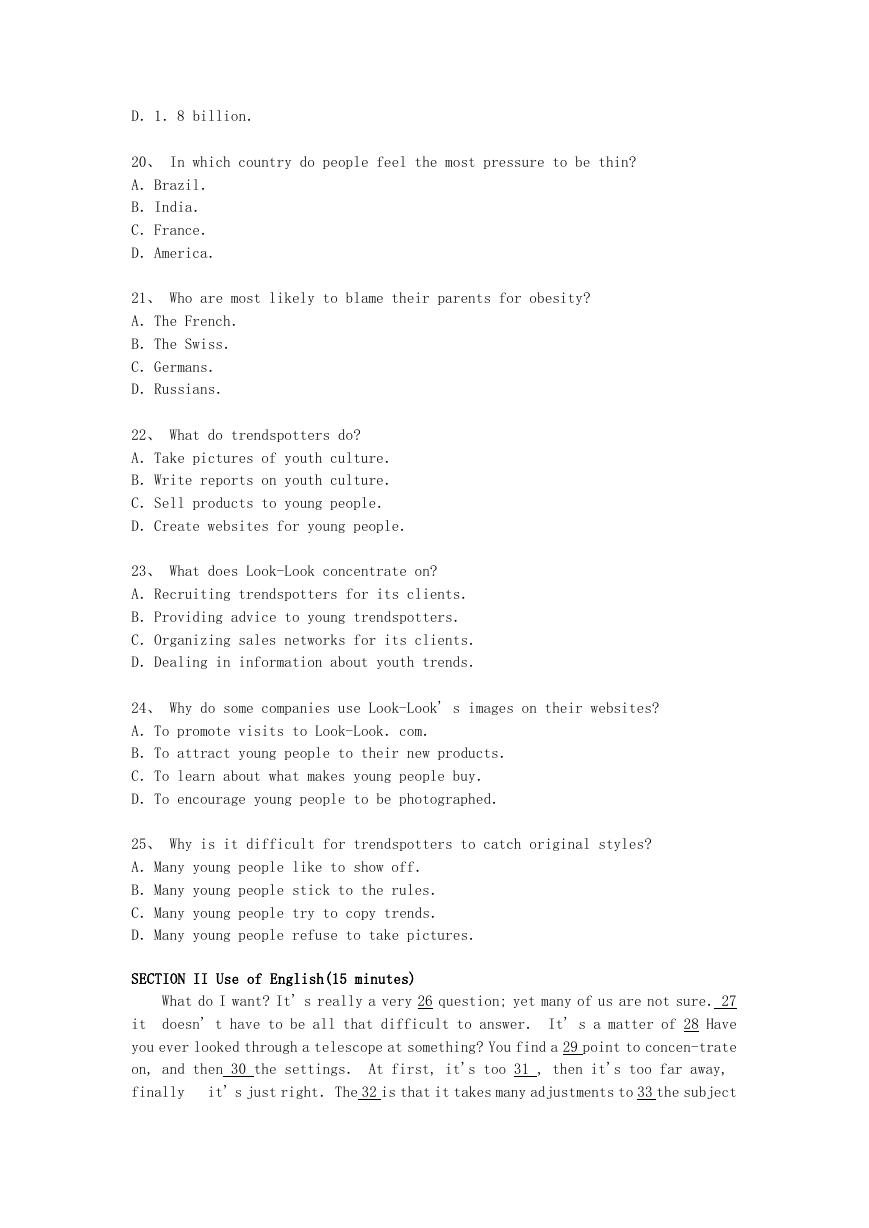
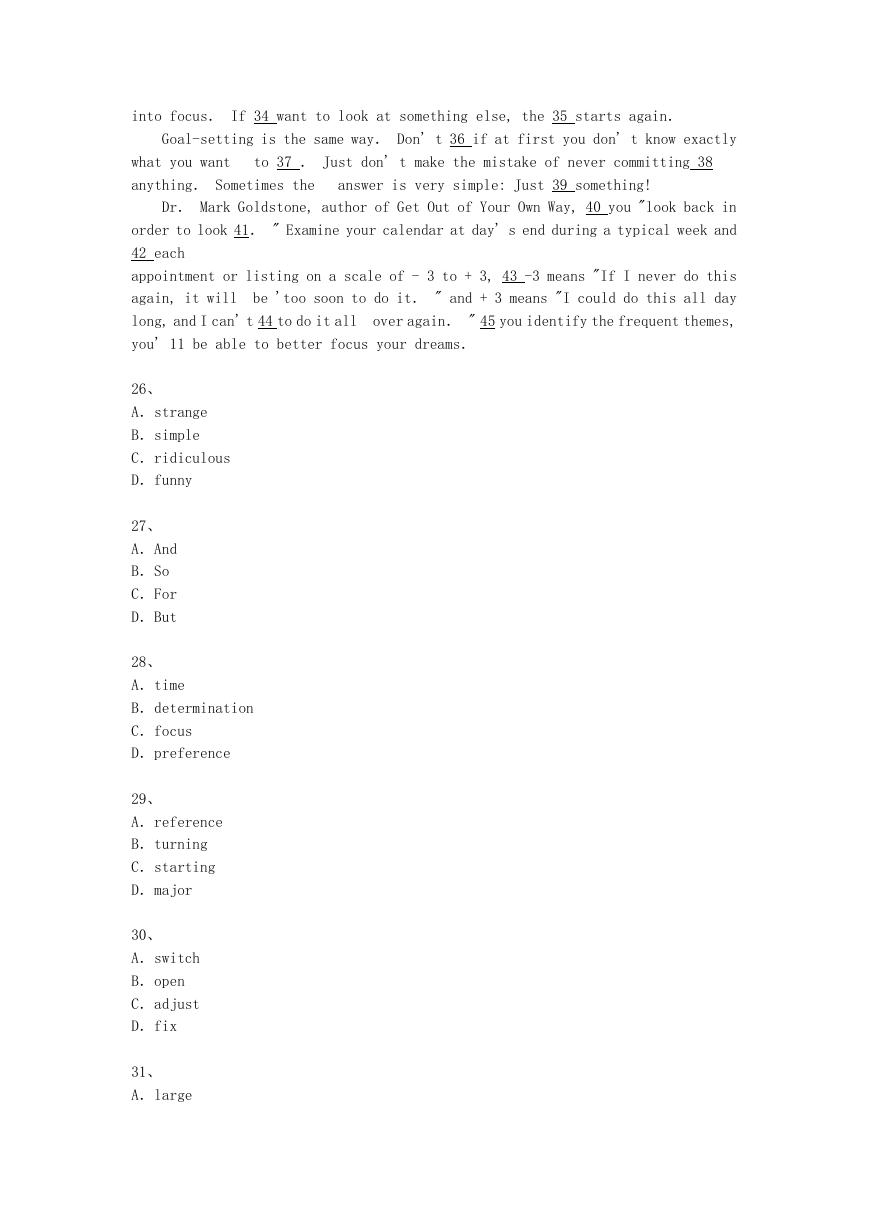
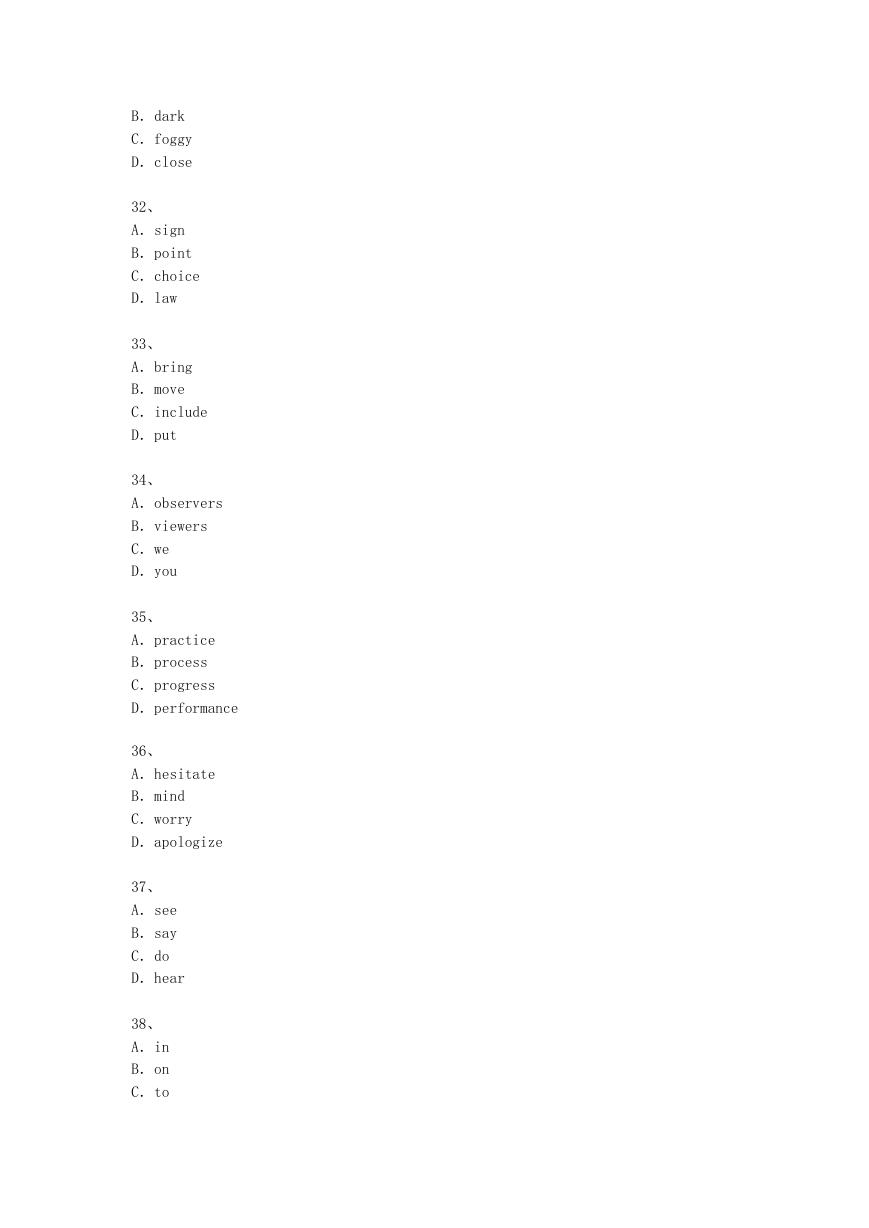

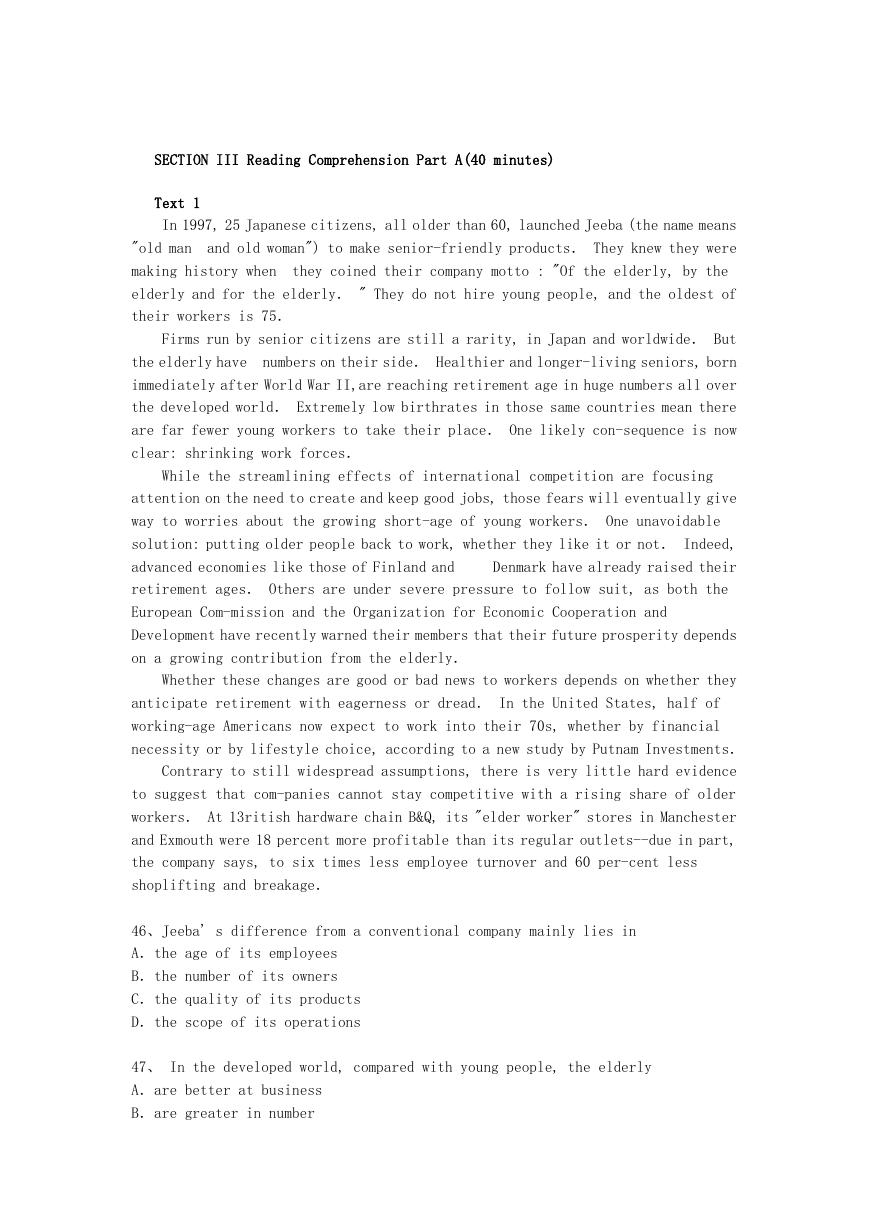








 2023年江西萍乡中考道德与法治真题及答案.doc
2023年江西萍乡中考道德与法治真题及答案.doc 2012年重庆南川中考生物真题及答案.doc
2012年重庆南川中考生物真题及答案.doc 2013年江西师范大学地理学综合及文艺理论基础考研真题.doc
2013年江西师范大学地理学综合及文艺理论基础考研真题.doc 2020年四川甘孜小升初语文真题及答案I卷.doc
2020年四川甘孜小升初语文真题及答案I卷.doc 2020年注册岩土工程师专业基础考试真题及答案.doc
2020年注册岩土工程师专业基础考试真题及答案.doc 2023-2024学年福建省厦门市九年级上学期数学月考试题及答案.doc
2023-2024学年福建省厦门市九年级上学期数学月考试题及答案.doc 2021-2022学年辽宁省沈阳市大东区九年级上学期语文期末试题及答案.doc
2021-2022学年辽宁省沈阳市大东区九年级上学期语文期末试题及答案.doc 2022-2023学年北京东城区初三第一学期物理期末试卷及答案.doc
2022-2023学年北京东城区初三第一学期物理期末试卷及答案.doc 2018上半年江西教师资格初中地理学科知识与教学能力真题及答案.doc
2018上半年江西教师资格初中地理学科知识与教学能力真题及答案.doc 2012年河北国家公务员申论考试真题及答案-省级.doc
2012年河北国家公务员申论考试真题及答案-省级.doc 2020-2021学年江苏省扬州市江都区邵樊片九年级上学期数学第一次质量检测试题及答案.doc
2020-2021学年江苏省扬州市江都区邵樊片九年级上学期数学第一次质量检测试题及答案.doc 2022下半年黑龙江教师资格证中学综合素质真题及答案.doc
2022下半年黑龙江教师资格证中学综合素质真题及答案.doc